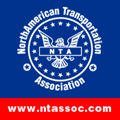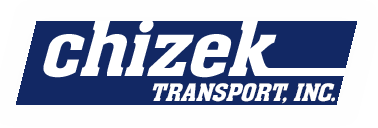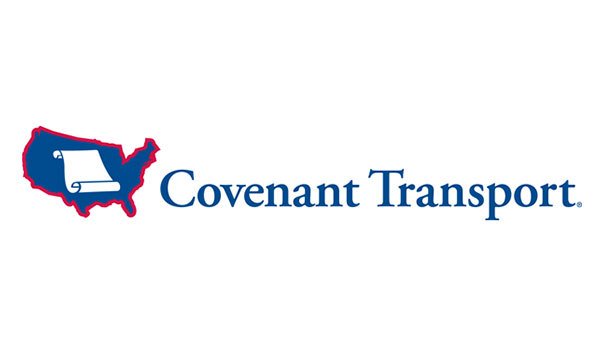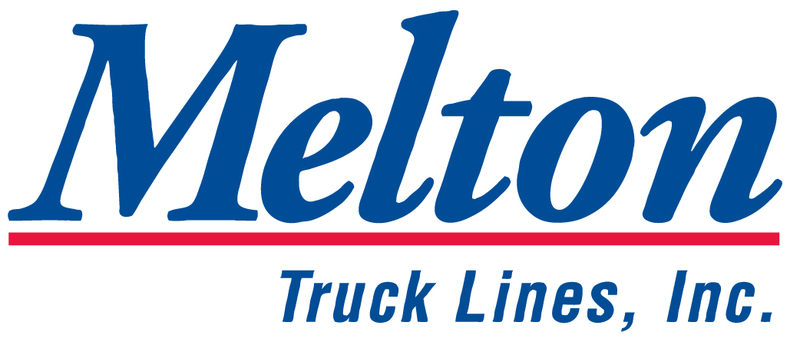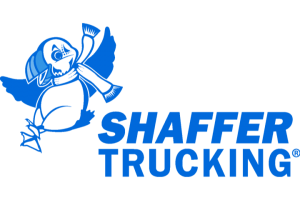Securing Your Load
Look at your straps and find the load capacity of the strap. Four-inch straps can handle 5,800 pounds; two-inch straps can handle 3,335 pounds. Never exceed those weights. A way to find the average weights per pallet if the exact weight is not known is to take the total number of pallets and divide that into the total weight of the load.
- If the load is resting against a bulkhead or headache rack and it is ten feet or long or less and the weight is less than the strap strength, you may place two straps on that first bunk. If the trailer does not have a headache rack, you must place a third strap (a penalty strap) to prevent the load from shifting.Let's pick on a bundled lumber load of ten-feet lengths of 2x4s.
The following bunks, if not touching, must have at least two straps on them as well. The new rules also require that belly straps of the load are over six feet above the deck. This means that to legally comply, you must place at least one belly strap per bunk on the lower bunks of materials as well as comply with the one strap for every ten-foot length over the top tier. Don't forget the penalty straps for not having bunks touching each other on the load.
Pretty complicated, huh? Are you mad yet? Has the world gone crazy in over-regulation of a business? I'd say "yes" is the answer to all three questions. You may not like the rules, but understand that you will live by them or lose a lot of money. Many companies are getting Out Of Service (OOS) roadside inspections. Many times it is for improper load securement. The driver may be following company policies; however, those policies must meet the current federal tie down guidelines.
You, the driver may be placed OOS until the proper amount of straps are placed on the load, after which, they are at liberty to leave (you may or may not receive a citation). The company, however, will get stuck with an OOS on their MCMIS profile. Too many of those things will trigger a DOT safety audit. (Both the driver and the company lose on this one.)
The safe transport of materials on our highways is everyone's responsibility. How would you like another driver to secure his/her load if you are traveling beside them on a highway on vacation? Treat every family with the same respect. The manager of a company, the safety manager, the dispatcher, the mechanic, the driver, and the co-driver all have the requirement to be professional in their jobs. One of the tangents of a driver's job is to never lose items off their load.
You must take the time to properly secure you loads. Stop within the first fifty miles and retighten the load if necessary. On non-hazardous loads, you are required to stop and check the load every 150 miles or every three hours, whichever comes first. (HazMat requires checking the loads within the first 25 miles and every 100 miles or two hours thereafter.) I only have a couple drivers that correctly log those checks.
While a lot of the times there are adequate securement devices available, how many drivers really look at the following sections of the rules as applied to your truck?
- (392.7) Equipment, inspection and use. [The DVIR (Daily Vehicle Inspection Report)] You do your part correctly; let others do theirs, too. There are nine mandatory items to look at:Service brakes-including trailer brake connectionsParking (hand) brakeSteering mechanismLighting devices and reflectorsTiresHornWindshield wiper(s)Rear vision mirror(s)Coupling systemDon't gun deck the paperwork. Actually look over the tractor trailer and write it up if something is out of order. It may not stop you using the vehicle, but you must do the necessary paperwork to cover yourself. Remember that the mechanic has a work load that does not give him/her time to personally pre-inspect each vehicle before use-that's your job. Document it!
- (392.8) Emergency equipment, inspection and use. What are the four required safety items that must be checked?Safety trianglesSpare fuses/circuit breakersMounted fire extinguisherSeat belt
- (392.9) Inspection of cargo, cargo securement devices, and systems. This includes chains, binders, straps, and winches. Additionally your trailer may have cable or other types of securement devices. All have to be within standard, operationally ready, and 100 percent usable. For this article, I will limit this inspection to chains, binders, straps, and ratchets.The chains and binders (snap, spring, or ratchet types) must be of equal size to the chain used. There cannot be excessive wear on parts to disable the correct use of the binders. Likewise, the chains must also match the binder used, not have stretched links, damaged links, or deformed links to prevent their correct use. There should be chain grade markings on the links or hooks. Never exceed those markings for everyone's safety. Straps of any length must be in usable shape. By this I mean that whatever the width, the total number of cuts and damage on the strap cannot exceed 1/4 of the width of the strap cumulative (1/2-inch on a 2-inch strap)! If the damage is that or more, the strap is OOS. Likewise, there is a single safety thread running the length of the center of the strap. If it is cut or frayed, the strap is OOS. Check the ratchets that are on the trailer, too. The ratchets must be fully operational as to being in shape to spin, (slide if necessary) and have no broken or cracked welds (if welded in place). A thorough inspection of these parts can be done on a daily basis each time the devices are used.Under Part and Accessories Necessary for Safe Operation, subpart 1, Protection Against Shifting and Falling Cargo §393.100 - §393.136, there are multitudes of ways to secure your load. Depending on what type of load you have, there may be specific instructions on exactly how to secure you load. Make sure that you follow those instructions to the letter. One thing that may assist each driver is to secure your own copy of the "Management" edition of the FMCSRs. They are available through U.S. Government printing office, J.J. Keller, Labelmaster, and other sources. These editions have detailed information as well as DOT interpretations of the regulations under each section. These help clarify and simplify the mumbo-jumbo sometimes stated!Having thorough knowledge and understanding of the mandatory tie down procedures will not only make you safer, but smarter than others out there on the road. You'll be safer having properly secured freight and smarter for not getting placed OOS for improper load securement. Ultimately, this will save you money (no fines) and time (fewer inspections due to obvious improper securement).
Written By: Chett Winchell





